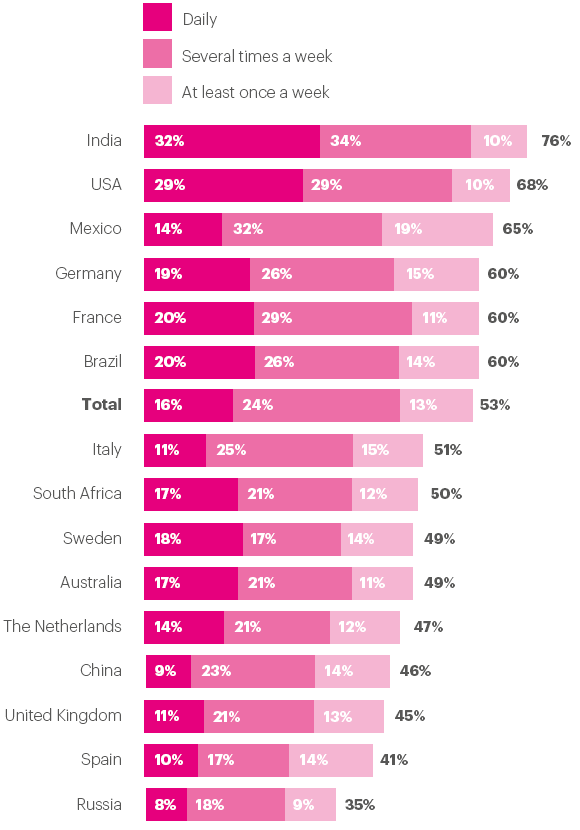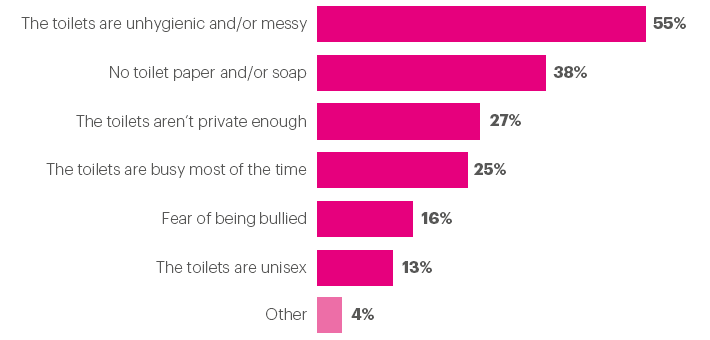Ensuring a good foundation for the next generation
“As we started working with new hygiene routines, I was a bit sceptical. It felt like it demanded a lot of time, which is a limited resource working in a preschool. But once we had established the routines, it was doable and I started to notice that both the children and I did not get sick that often. However, the greatest reward is the collaboration with the parents. Discussions about preventing infections used to be a source of conflict, but now they know that we do our part in keeping their children healthy and then they take their part of the responsibility as well.”
Josefine, Preschool Teacher, Sweden
Good hygiene practices play an essential role in achieving several of the United Nations’ Sustainable Development Goals (SDGs). Access to clean water and sanitation (SDG 6) are the preconditions for human life. The United Nations named the upcoming ten years the Water Action Decade, acknowledging that clean water, sanitation and hygiene are vital in achieving other sustainable development goals.
Clean water, sanitation and hygiene are vital in achieving other sustainable development goals.
Safe hygiene practices are fundamental for ensuring good health and well-being for everyone (SDG 3). This is especially important for children who are more vulnerable than adults to infections. Infectious diseases, such as diarrhea and pneumonia, threaten the lives of millions of children every year. The good news is that they can be prevented. Simple handwashing with soap removes 90% of contaminants, and safe hand hygiene could spare one out of three children who get sick with diarrhea,1 and almost one out of five who get respiratory infections like pneumonia2. Better hand hygiene also has a large impact in situations where infections are not life-threatening. Fewer infections among young children means fewer visits to the doctor, reduced need for antibiotics, and decreased absenteeism among parents.

A focus on hygiene is important in all arenas of a child’s life, and is especially important in situations where many children are brought closely together. One such place is preschools and schools, as they can easily become playgrounds for infections. Interventions to raise the hygiene standards can prevent many infections and improve children’s health and school participation. Depending on the initial hygiene standard, studies on hygiene interventions show reductions in absence rates among children, with numbers ranging from 7% up to 54%.3
Poor hygiene can also become a barrier for education and participation in the community in other ways. In many countries girls miss out on school and are in different ways excluded from their community during menstruation. Menarche, the first period, can often be a traumatic experience, since many girls are not given the knowledge to understand what they are experiencing. Learning about the menstruation cycle from an early age is critical, as well as ensuring that girls have the means and privacy to handle their menstruation. Safe menstruation hygiene management is therefore an important part in reaching the SDG target 6.2 on access to adequate sanitation and hygiene for all, and achieving gender equality and female empowerment (SDG 5).
Good hygiene practices are thus one of the most effective and preventive methods we have to battle numerous societal challenges. A starting point is to ensure that sanitation facilities are user-friendly and accessible, regardless of age, gender or ability. Today, that is often not the case, even in countries with a generally high hygiene standard. According to Essity’s global survey, 53% of parents say that their children refrain from using toilets in schools on a weekly basis. The main reasons are that the toilets are perceived to be unhygienic (55%) and lack sanitation supplies (38%).
Many children refrain from using toilet facilities in school

However, infrastructure alone does not build good hygiene practices. Creating habits demands knowledge and perseverance from every adult in children’s lives. The responsibility for teaching children how to care for themselves is the responsibility of the parents, but also the local communities and the schools. The importance of hygiene and health has to be emphasized repeatedly in every area of a young person´s life in order to be successful. Yet, our experience is that parents do not always understand why it is important to talk to their children about topics like personal hygiene or menstrual health. Similarly, teachers in preschools and schools rarely have the time or support to work systematically in establishing healthy hygiene practices among young people.
Infrastructure alone does not build good hygiene practices.
Still, there are successful cases in which an increased knowledge in both schools and the overall community has created a positive circle of reinforcement. In this chapter, we will explore what benefits improved hygiene standards bring to preschools and schools, how children can be engaged in a playful way, and why it is important to talk about the changes of puberty with young girls and boys from an early age.
USD 92
return for every dollar invested
In India the return for investing in handwashing programs is estimated to be 92 dollar for every dollar invested.4
1 R. Ejemot-Nwadiaro et al., ‘Hand washing for preventing diarrhoea’, Cochrane Database Systematic Reviews, 2008, (1):CD004265; AE. Aiello et al., ‘Effect of hand hygiene on infectious disease risk in the community setting: a meta-analysis’, The American Journal of Public Health, vol. 98, no. 8, 2008, pp. 1372-1381.
2 T. Rabie & V. Curtis, ‘Handwashing and risk of respiratory infections: a quantitative systematic review’, Tropical Medicine & International Health, vol. 11, no. 3, 2006, pp. 258-267.
3 A. Bowen et al., ‘A cluster-randomized controlled trial evaluating the effect of a handwashing-promotion program in Chinese primary schools’, The American Journal of Tropical Medicine and Hygene, vol. 76, no. 6, 2007, pp. 1166–1173.; M. Uhari & M. Möttönen, ‘An open randomized controlled trial of infection prevention in child day-care centers’, The Pediatric Infectious Disease Journal, vol. 18, no. 8, pp. 672-677.; A. Lennell et al., ‘Alcohol based hand disinfection reduced children’s absence from Swedish day care centers’, Acta Paediatrica, vol. 97, no. 12, 2008, pp. 1672-1680.; Västra Götalandsregionen, HYFS Final report 2006-2012, 2014.; I. Nandrup-Bus, ‘Håndvask i skoletiden nedsætter elevernes sygefravær’, Sygeplejersken, no. 7, 2010, pp. 46-50.
4 Townsend, K. Greenland & V. Curtis, ‘Costs of diarrhoea and acute respiratory infection attributable to not handwashing: the cases of India and China’, Tropical Medicine & International Health, vol. 22, no. 1, 2017, pp. 74-81.
